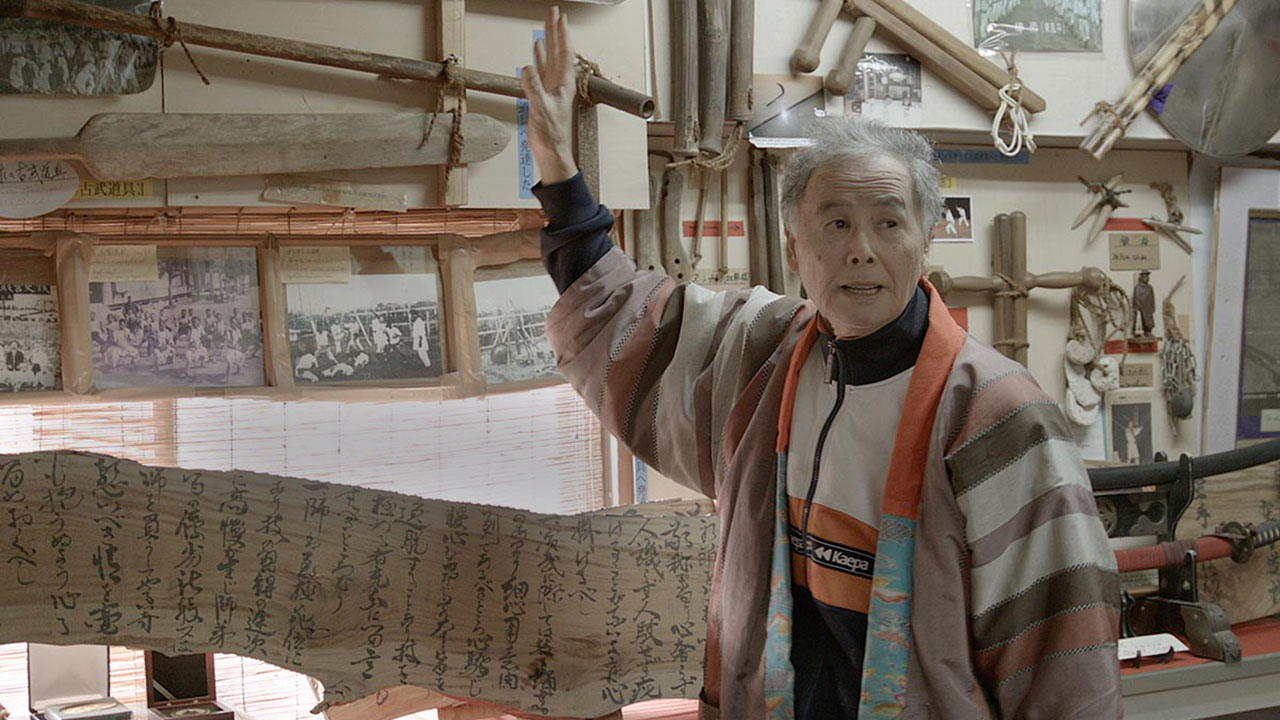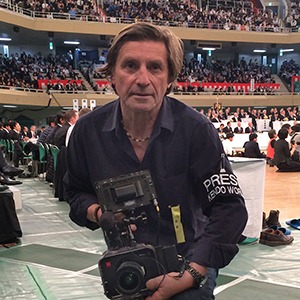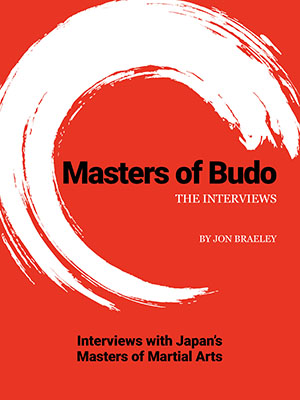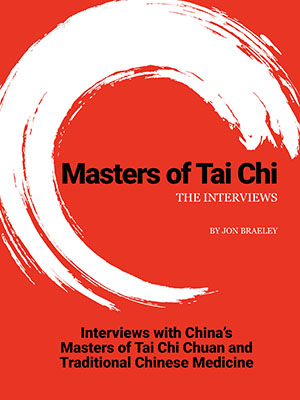About the Curator
Tetsuhiro Hokama Kyōshi, 10th dan, is a very interesting karate sensei and can be rightly called The Historian of Karate. He is the founder and curator of a karate museum in the island of OKinawa, which is dedicated to all things karate and kobudō. As soon as I knew that I would be in Okinawa for ten days, I started to make plans to visit him.
As the gatekeeper of Okinawan martial arts and museum owner dedicated to karate, Hokama Sensei is the perfect choice to ask about the origins of karate. Now a 10th dan Gōjū-ryū instructor, he has spent his life in the study of karate and the history of the Okinawan martial arts. He was born in Taiwan in 1944 and both his parents were of Okinawan decent. Like most students of karate in Okinawa, his teacher was a family member, in this case, his grandfather Seiken Tokuyama. Hokama graduated to formal karate training with a well known instructor, Sekō Higa who was a student of Chōjun Miyagi (1888-1953), the founder of Gōjū-ryū karate. The dōjō of Higa Sensei was legendary with many students going on to become instructors. It was here that Tetsuhiro Hokama was introduced to earlier martial art styles with roots in China and to kobudō, the old Okinawan weapon styles.
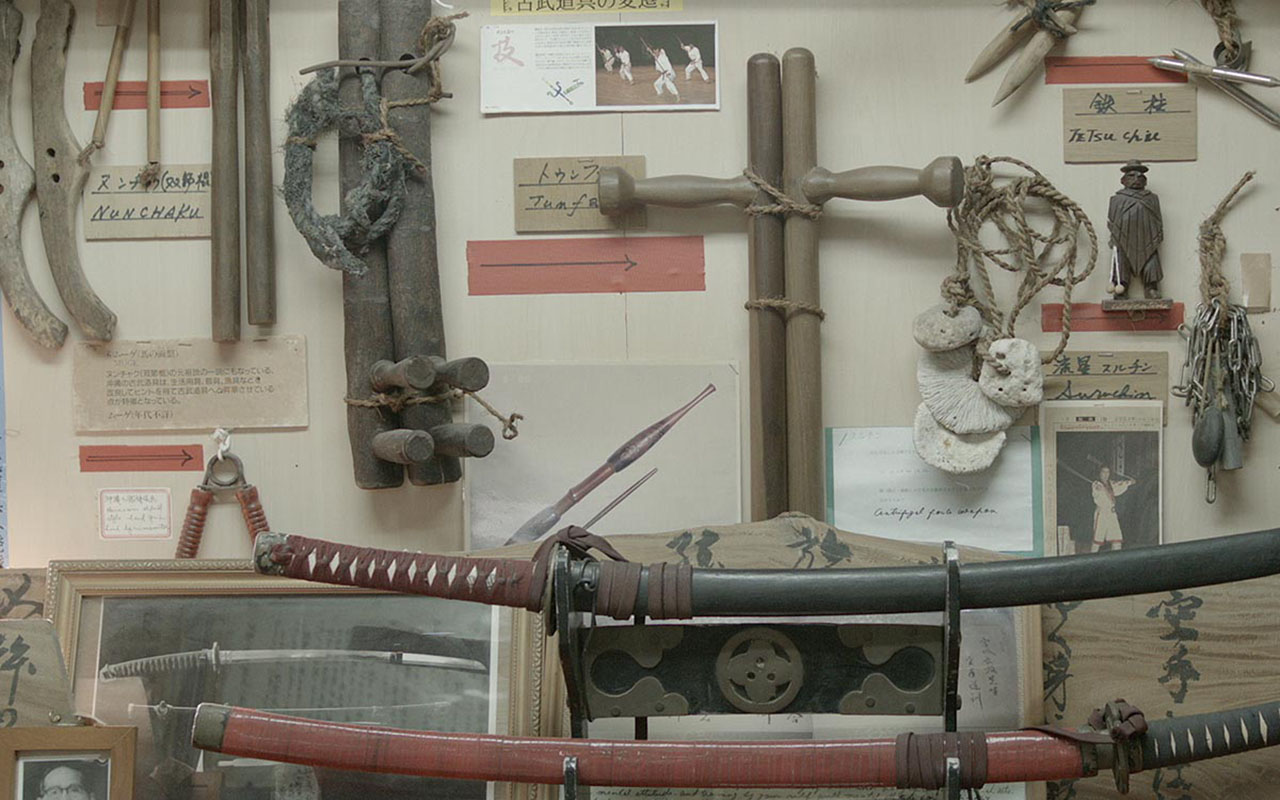
The museum walls are covered in ancient weapons of Okinawa
Museum of Karate
I had arranged to spend the day with Hokama Sensei at his dōjō and museum, which is about a forty five minute drive North East to the town of Nishihara. The official name of Hokama’s museum is the ‘Museum of Ryūkyū Martial Arts’ and is on the second floor of a large detached corner building, which houses his dōjō on the ground floor. Tetsuhiro Hokama met us at the door dressed in an impressive brightly colored woollen kimono, worn like an overcoat over his karategi. The ground floor is an impressive dōjō with plenty of space for a large class and with it’s high soaring double height, you can swing a long staff or bō without worrying if you are going to shatter a light fixture. The museum is a second floor gallery and can be reached by stairs from the dōjō. After the introductions, we relaxed and drank some wonderful hot tea with our host and then made our way to the museum on the second floor where we would record our interview.
When I stepped on to the second floor my first thought was how I would fit all the hundreds of artifacts and display pieces into my documentary! I could have spent all day searching among the many display items. The museum is crammed from floor to ceiling with all things martial arts, from posters and photographs, weapons, training equipment, diplomas and documents and old artifacts from various dōjō, most of them from Okinawa. Greeting me at the entrance is a large black and white poster of a fist with the two heavily calloused knuckles. I made a note to ask about this in my interview. The walls are covered in more photographs showing the history of karate through past masters. The weapons of kobudō, mounted on walls and in showcases have been gathered from all over the World and are worth the small entry fee alone. And the priceless part of your visit is having Tetsuhiro Hokama walk around with you, telling you the rich history of karate.
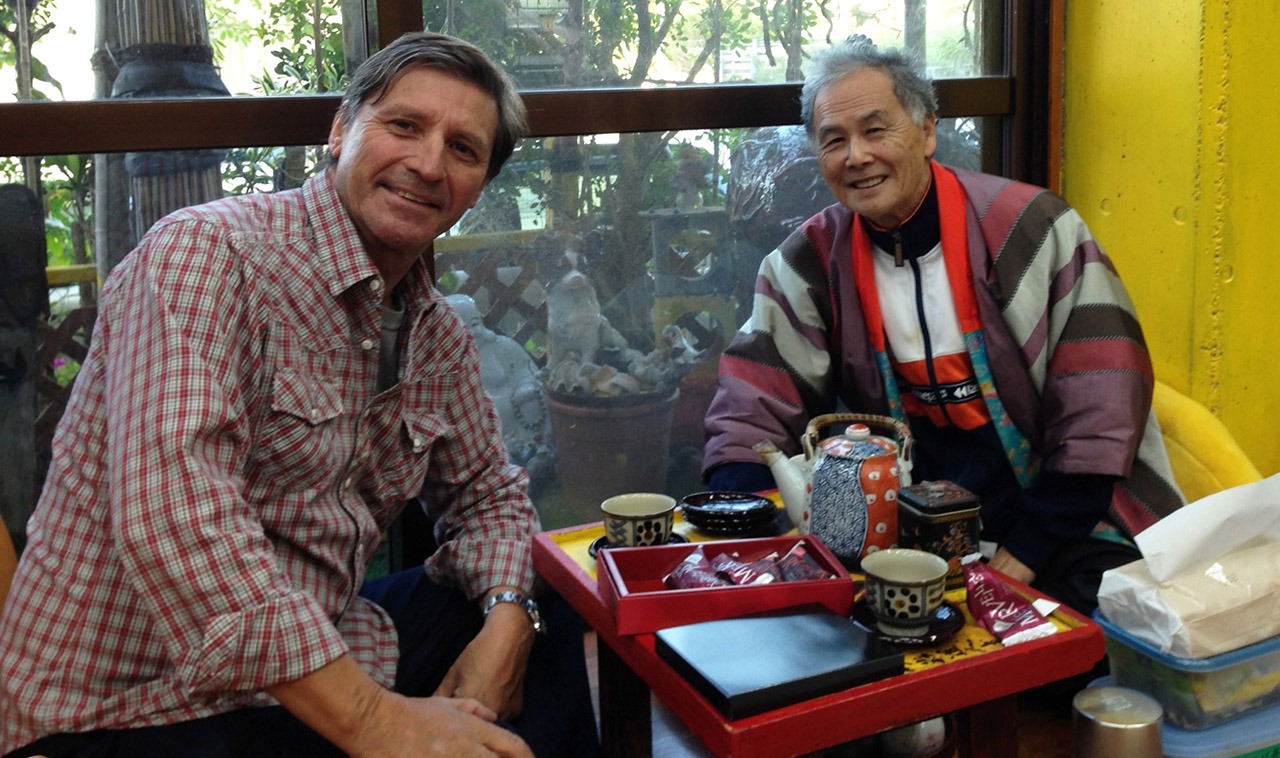
Director Jon Braeley talks with Hokama Sensei over tea
A Talk with Tetsuhiro Hokama, 10th dan
What were the mains schools of Okinawan karate to develop?
Well in the beginning there were no karate ryūha in Japan. In the old days, there was only karate here in the Ryūkyū Kingdom, you call Okinawa, and it was a different country from Japan. In Japan there was jūdō, kendō, naginata, aikidō, and so on. There was no karate. It was first taken there around 1922, at the time of Gichin Funakoshi Sensei, as well as the time of Motobu Kochi Sensei.
In Japan there were several ryūha in kendō, jūdō and naginata. But in Japan, Funakoshi Sensei was asked which ryūha there were in Okinawa. Sensei replied that there are no ryūha. For example, what is done in Naha is called Naha-te, what is done in Shuri is called Shuri-te, and so on. It was used as kobudō so it was understood simply as kobudō. However, if there are no ryūha then it would be difficult in Japan, so various ryūha were given titles or names. I can explain further.
What is called ryūha schools did not exist in Okinawa in the past. In Okinawa, karate was referred to as ‘te’ (hand) as in ‘empty hand’. However, in Japan, jūdō, kendō, naginata , aikidō, and so on, all have schools. That is why when Gichin Funakoshi Sensei took karate to the mainland in 1922 he was asked about which ryūha it was. In Okinawa there were no ryūha, but Naha-te, Shuri-te, Tomari-te, kobudō… However, this was inconvenient in Japan. Because there were no ryūha so Naha-te became Gōjū-ryū karate. Shuri-te became Shōrin-ryū karate, as in ‘small forest’, ‘little forest’, or ‘pine forest’, and this later changed into Shōtōkan. Tomari-te and kobudō were also transmitted like this. So it changed from ‘te’ to ryūha, and nowadays it has changed to karatedō.
Can you talk about the history of Gōjū ryū?
Gōjū ryū was originally the ‘fist of the crane’ from Fujian province in China. Various techniques based of mimicking animals were transmitted to Okinawa such as the ‘fist of the crane’ and ‘the fist of the tiger’. At first, these were created in Fujian province in China and then transmitted to Okinawa, and also emissaries from Okinawa traveled to China and learned them.

Gōjū ryū karate master Higaonna sensei teaching at his Okinawan dojo
There were also accredited Chinese envoys to Okinawa, as well as sailors. There were various types of transmission routes. Among these, it is historically known that Gōjū-ryū came in 1392 along with the 36 families from China who emigrated to Kume Island. From a historical point of view it can be said that it originated around this time, but of course, the history is much older than that. The first sensei from that time was called Yabu, which became Hokkama.
Then came Araki Seisho, and next came Higaonna Kanryō, who was followed by Chōjun Miyagi, and after him Higa Seiko Sensei, and then we are under Higa Seiko Sensei. Fukuchi Sensei and I are under Higa Seikio Sensei. Gōjū-ryū has been passed on as one line. From Kanryō Higaonna and Chōjun Miyagi various ramifications take place. Now there are eight groups which form Gōjū-ryū. This is the flow of how things went here in Okinawa. When it went to Japan it was passed on as Gōjū-ryū.
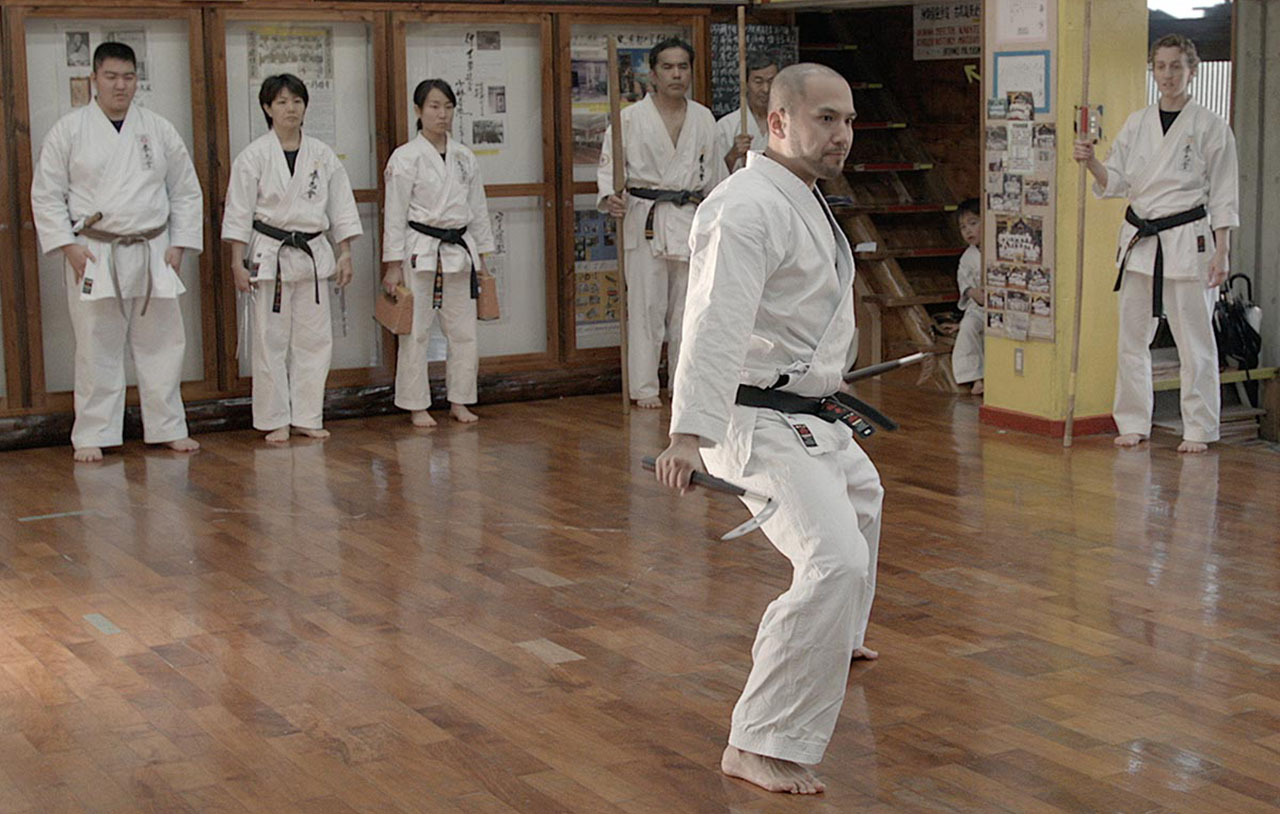
Students of Hokama sensei training in weapons of Okinawa or Kobudo
How did karate travel from Okinawa to mainland Japan?
Shōtōkan was originally taken as Shuri-te to Tokyo around 1922 by Gichin Funakoshi Sensei. There, he taught it at various universities in Tokyo such as the University of Tokyo, Chou University, Waseda University, Keio University and so on, and when he was asked what ryūha it was, he said that it was Shuri-te. However, it was not understood what he meant by that. By attaching the name of a location Shōtō became Shōtōkan-ryū. However, originally there was no such thing as Shōtōkan-ryū. Similarly, if one goes back down the path of the origins, there also isn’t such a thing as Okinawa karate. Of course it depends on which point in time and which location you look at it from, but Shōtōkan is Shuri-te.

